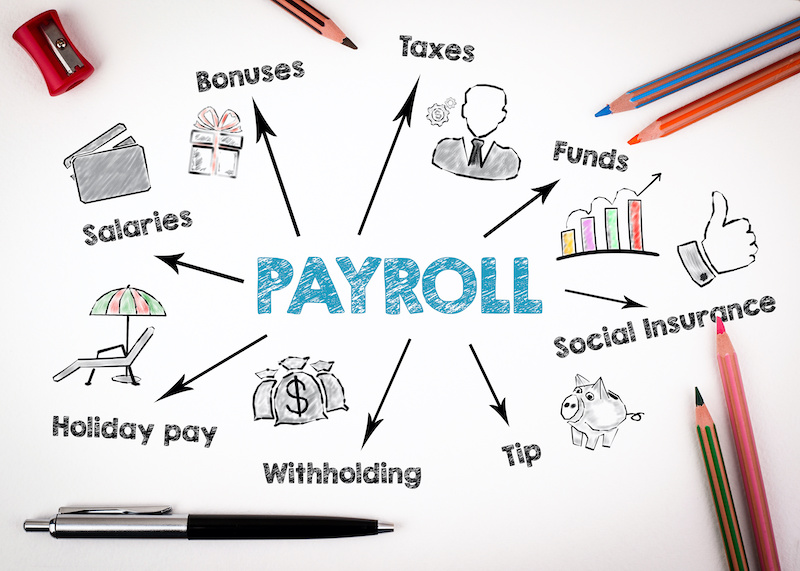This is one of the most frequently asked questions we get as bookkeeping and tax professionals. The answer is “It Depends”. There are many items we need take into consideration when answering this question, but the first is how is your business structured? Please note, this is a very high-level overview of a complex subject matter and is for informational purposes only. You should consult your tax professional as well as your legal counsel for your particular situation.
We are going to look at the various structures, and what each of these payment types means to you as the owner. Additionally, you should know how it impacts your financial statements. For example, a draw as a sole proprietor is not an expense to the business, it is simply a way to take profits out of the business throughout the year.
| Payment Type | Structure Applies | Financial Report found on |
| Draw | Sole Proprietorship | Balance Sheet (equity account) |
| Guaranteed payment | Partnership | Income Statement (profit & loss) |
| Salary | s-Corp and c-Corp | Income Statement (profit & loss) |
| Distribution | Partnership, s-Corp, c-Corp | Balance Sheet |
| Dividends | c-Corp | Balance Sheet |
Sole-Proprietorship
As the simplest business structure, Sole Proprietors have the simplest way of paying themselves. A business owner would do one of the following things:
- Write themselves a check
- Transfer money from their business account to personal account
From a bookkeeping perspective, this is called taking an owner’s draw. Owner’s draw is an equity account that shows what the owner has taken out of the business in the year and is closed out using adjusting entries at the end of every tax year. All profit is essentially distributed to the owner at year end through the tax return and income tax as well as self-employment tax is due on the entire net profit of the business.
Limited Liability Company (LLC)
The Limited Liability Company or LLC is a little more complex because the IRS doesn’t recognize it as an entity type and so it can fall into many categories. As a single member LLC who hasn’t done anything to change how it is taxed, you’ll follow the rules of the sole proprietorship above. As a multimember LLC, you’ll default to a partnership and we’ll talk about this in its own section. An LLC can also choose to be taxed as a c-corporation, and take a further election to be taxed as an s-corporation. We’ll address each of these in separate sections as well.
Partnership
A partnership is where 2 or more people are engaging in business together. This can be formed as an LLC, PLLC (professional LLC), or LLP (limited liability partnership). Each partner can be paid different amounts based on their roles in the business. Partners have the option to pay themselves in the following ways:
- Distribution
- Guaranteed partner payments
From a bookkeeping perspective, option one is the same as above with the sole proprietorship, except each partner has their own equity accounts to track. A guaranteed partner payment allows one partner to be compensated for work in the business regardless of overall business performance. The guaranteed payment is an expense to the business. A general partner includes guaranteed payments as part of their net earnings from self-employment. Limited partners don’t pay self-employment tax on their distributive share of partnership income, but do pay self-employment tax on guaranteed payments.
Why would we pay a guaranteed payment? Think about a partnership who owns a restaurant. One partner is basically a silent partner providing financial backing and the other has the knowledge of the industry and takes on the day-to-day overall management of the restaurant. The partner managing the business can and should be compensated for their time.
S-Corporation
An s-Corporation is still a pass-through entity and not subject to double taxation like a c-Corporation. An s-Corporation owner can receive compensation one of two ways:
- Reasonable Salary
- Distribution
Owners are required to take a reasonable salary and cannot simply take distributions. What does that mean? This means that they are placed as a W2 employee of the corporation and will need to pay themselves based on their job duties, not profitability of the business. In recent years, there have been several IRS court cases where owners have not taken reasonable compensation, and are subjected to various fines and penalties. The challenge comes into what exactly is considered reasonable. There are many factors to take into consideration. For example, as a business owner you wear many hats. You provide services such as administrative support, management, bookkeeping, tech support, and the actual work of what your business does just to name a few. If you had to pay someone else to do these tasks in your business, what would you need to compensate them? Then you need to consider the number of hours you are actually working in and on your business, and take the percentage of time to each task to determine.
C-Corporation
As a c-corporation, there is no requirement that a corporation pays the owners a salary, but if they do accept payment for services, there are some guidelines to follow. The main way a c-corporation owner is paid is when dividends are declared by the Board. A dividend is where profits are paid out after taxes. This avoids payroll taxes, and has traditionally taxed at a lower rate than income tax. Additionally, distribution payments can be made.

